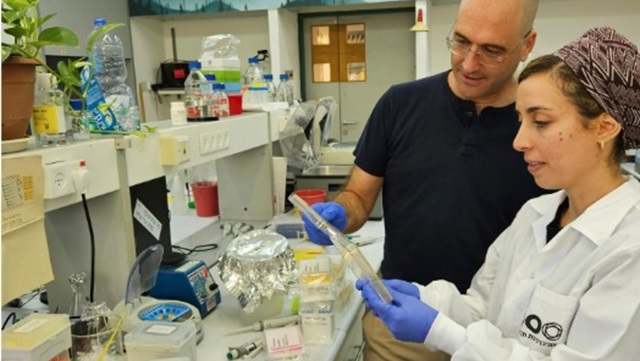Researchers at Tel Aviv University have discovered how to neutralize bacterial defense systems, facilitating the transfer of genetic material between bacteria. This finding could lead to new tools for combating antibiotic resistance and improving genetic manipulation techniques for applications in medicine, industry, and environmental science.
PhD student Bruria Samuel led the study from the lab of Prof. David Burstein at the Shmunis School of Biomedicine and Cancer Research at Tel Aviv University’s Wise Faculty of Life Sciences. Other contributors to the research include Dr. Karin Mittelman, Shirly Croitoru, and Maya Ben-Haim from Prof. Burstein’s lab. The findings were published in the prestigious journal Nature.
Genetic diversity is crucial for species survival and adaptation to environmental changes. While sexual reproduction drives this diversity in humans and many other organisms, bacteria and other microorganisms lack this mechanism. However, as evidenced by the rapid spread of antibiotic resistance, bacteria possess alternative strategies for maintaining genetic diversity, including the direct transfer of DNA between individuals.
While DNA transfer is vital for bacterial survival, a key question remains: how does this exchange occur so frequently given that bacteria possess numerous defense mechanisms specifically designed to destroy foreign DNA?
The new research focuses on a process called “conjugation,” one of the main mechanisms for transferring DNA from one bacterium to another. During conjugation, one bacterial cell connects directly to another through a tiny tube that allows the transfer of genetic material fragments known as plasmids. Prof. Burstein explains: “Plasmids are small, circular, double-stranded DNA molecules classified as ‘mobile genetic elements.’ Like viruses, plasmids move from one cell to another, but unlike viruses, they do not need to kill the host bacterium to complete the transfer.”
As part of the natural exchange, plasmids often give recipient bacteria genetic advantages. For example, many antibiotic-resistance genes spread through plasmid transfer between bacteria. However, bacteria also have numerous defense mechanisms aimed at eliminating any foreign DNA entering their cells. “Conjugation is a well-known process that scientists also use in the lab to transfer genes between bacteria. It’s also known that bacteria possess mechanisms to destroy foreign DNA, including plasmid DNA, and some of these mechanisms are even used for various research purposes. However, until now, no one has fully explored how plasmids overcome these defense mechanisms,” says Prof. Burstein.
Samuel explains that she began the research by conducting a computational analysis of 33,000 plasmids, and identifying genes associated with ‘anti-defense’ systems that help plasmids bypass bacterial defense mechanisms. What was even more interesting was the location of these genes. As mentioned, plasmids are double-stranded circular DNA segments. In order to pass through the thin tube that connects the bacteria, one of those circular strands is cut at a certain point by a protein, which then binds to the cleaved strand and initiates its transfer to the recipient cell. “The genes for the anti-defense systems that I identified were found to be concentrated near that cutting point, and organized in such a manner that they would be the first genes to enter the new cell. This strategic positioning allows the genes to be activated immediately upon transfer, giving the plasmid the advantage needed to neutralize the recipient bacteria’s defense systems.”
Prof. Burstein recounts how, when Samuel first showed him her results, he found it hard to believe that such a phenomenon had not been identified before. “Bruria conducted an extensive literature review and found that no one had previously made this connection”, he says. Since the discovery was made by analyzing existing databases with computational tools, the next step was to demonstrate in the lab that this phenomenon indeed occurs during plasmid transfer between bacteria. Samuel explains, “To do this, we used plasmids that confer antibiotic resistance and introduced them into bacteria equipped with CRISPR, the well-known bacterial defense system that can target and destroy DNA, including that of plasmids. This method allowed us to easily test the conditions under which the plasmid could overcome the defense system — if it succeeds in overcoming the CRISPR system, the recipient bacteria become resistant to antibiotics. If it fails, the bacteria die.”
Using this method, Samuel demonstrated that if the anti-defense genes are positioned near the DNA entry point, the plasmid successfully overcomes the CRISPR system. However, if these genes are located elsewhere on the plasmid, the CRISPR system destroys the plasmid, and the bacteria die upon exposure to antibiotics.



